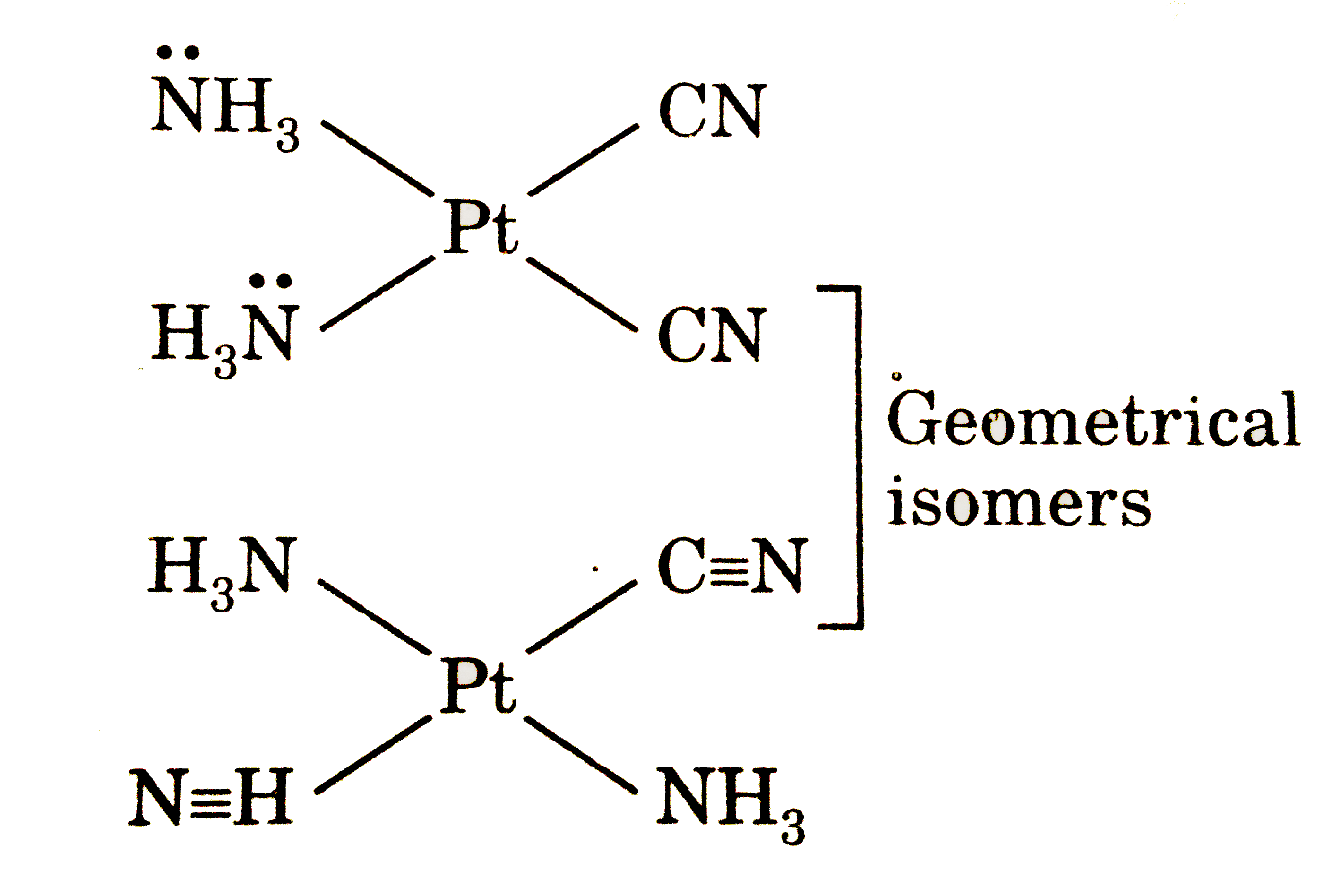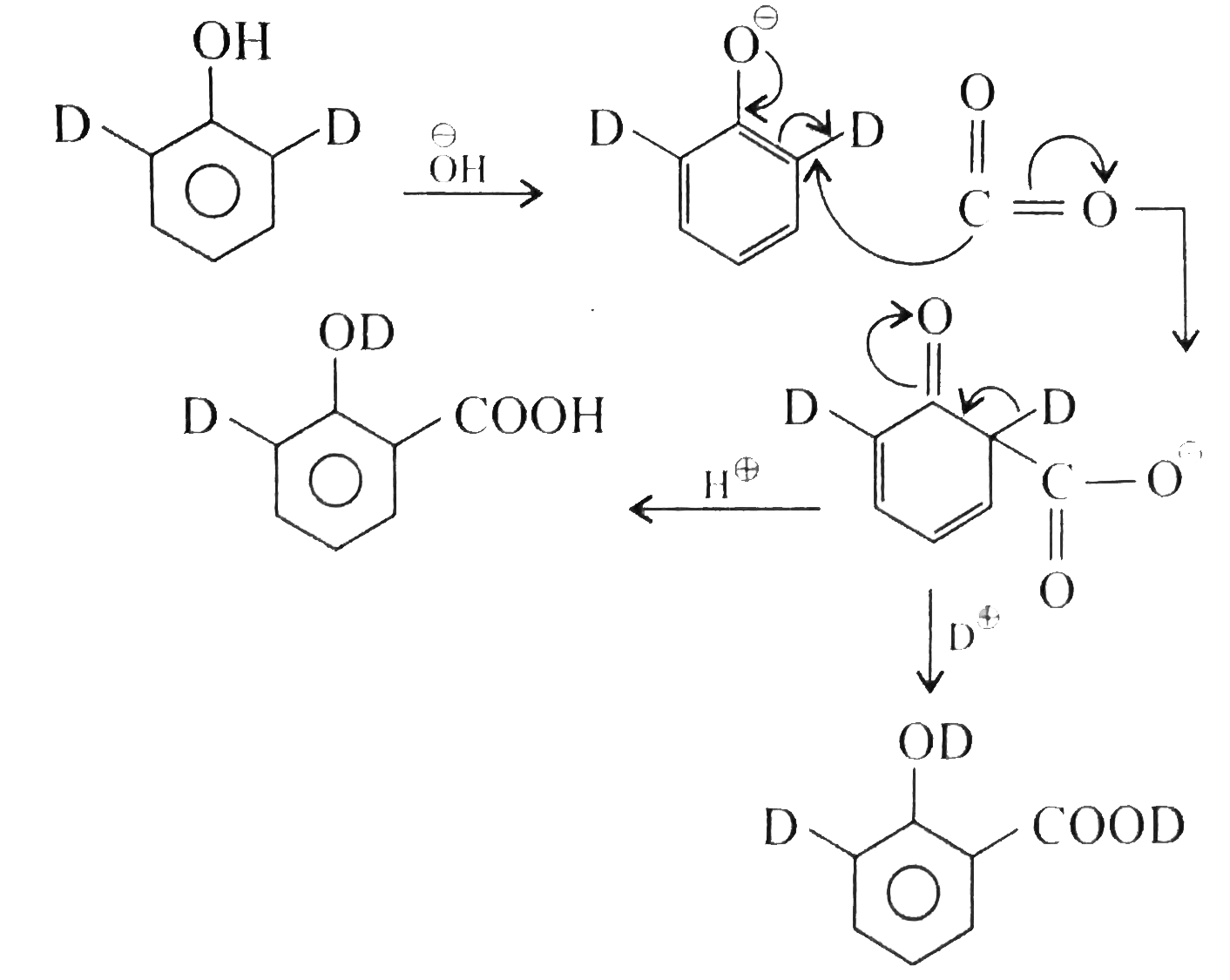InterviewSolution
This section includes InterviewSolutions, each offering curated multiple-choice questions to sharpen your knowledge and support exam preparation. Choose a topic below to get started.
| 5601. |
Whatis thevolumeofoxygenrequiredfor thecomplete combustonof 4 litre of ethane? |
|
Answer» 4 LITRE |
|
| 5602. |
X-ray diffraction studies show that copper crystallises in an fcc unit cell with cell edge of 3.608 xx 10^(-8) cm. In a separate experiment, copper is determined to have a density of 8.92 "g/cm"^3, calculate the atomic mass of copper. |
|
Answer» Solution :The NUMBER of atoms per UNIT cell (Z) = 4 `thereforeM = (d xx N_A xx a^3)/(Z)` `THEREFORE M =((6.022 xx 10^(23) "atoms mol"^(-1)) (3.608 xx 10^(-8) "cm")^3)/("4 atoms")` `therefore` M = 63.1 g/mol Atomic mass of copper = 63.1 u |
|
| 5603. |
Which one of the following is the lighest? |
|
Answer» 0.2 mole of HYDROGEN gas (b) `6.02xx10^(22)" molecules of N"_(2)` `=(28)/(6.02xx10^(23))xx6.02xx10^(22)=2.8g` (c) `"0.1 g of silver = 0.1 g"` (d) `"0.1 mole of O"_(2)=0.1xx32=3.2g` (e) 1 g `H_(2)O=1` Thus, g of silver is the lighest. |
|
| 5604. |
Write the steps and conditions involved in the following conversion . Acetophenone to 2- phenyl -2-butanol |
Answer» SOLUTION :
|
|
| 5605. |
Time taken for consumption of half of the initial concentration is 20 seconds for a first order reaction .What will be the time taken by the same reaction to get the concentration of reactant from 0.123 M to 0.0625 M. |
|
Answer» 5 sec |
|
| 5606. |
Which of the following statements is wrong concerning ideal solutions ? Ideal solutions can be formed when their components |
|
Answer» have zero heat of mixing |
|
| 5607. |
Which of the following pairs of a chemical reaction is certain to result in a spontaneous reaction? |
|
Answer» Exothermic and decreasing disorder `DeltaG=DeltaH-TDeltaS` `DeltaG=-ve`. HENCE, for spontaneous reaction, `DeltaG` MUST be -ve. |
|
| 5608. |
Tranquillizers. |
| Answer» SOLUTION :Tranquillizers are used to treat MENTAL tension anxiety, MANIA (disorderof mood), INSOMNIA (sleeping sickness), feeling DISCOMFORT. | |
| 5609. |
Which among the following statement is correct? |
|
Answer» MAGNITUDE of crystal FIELD splitting energy depends only on LIGAND field. |
|
| 5611. |
Zr and Hf almost equal atomic and ionic radii because: |
|
Answer» Of diagonal relationship |
|
| 5612. |
Which of the following pairs has the same size |
|
Answer» `FE^(2+), Ni^(2+)` |
|
| 5613. |
The sum of the number of lone pairs of electrons on each central atom in the following species is [TeBr_(6)]^(2-), [BrF_(2)]^(+), SNF_(3) and [XeF_(3)]^(-) (Atomic numbers : N = 7, F = 9, S = 16, Br = 35, Te = 52, Xe = 54) |
|
Answer» |
|
| 5614. |
The species in which the central atom uses sp? hybrid orbitals in its bonding is |
|
Answer» `SO_2` |
|
| 5615. |
Which of the followings is a trihydric alcohol? |
|
Answer» n-propyl alcohol |
|
| 5616. |
Which statement is not true about potash alum ? |
|
Answer» It's empirical formula is `KAl(SO_4)_2).12H_2O` |
|
| 5617. |
Write the name or formula of the following: A trihydric alcohol |
Answer» SOLUTION :
|
|
| 5618. |
Write the IUPAC name ofC_(6)H_(5)-underset(CH_(3))underset("|")"N -CH_(3) |
| Answer» SOLUTION :N,N -DIMETHYLANILINE. | |
| 5619. |
Which of the following is likely to have lowest p^(Ka) value |
|
Answer»
 is strongestacidas itreduces Bayer.sstrain is strongestacidas itreduces Bayer.sstrain
|
|
| 5620. |
What is Half-Life time of a reaction ?Derive the equation of Half -Life time(t_((1)/(2))) for zero order reaction. |
|
Answer» Solution :Half-LIFE time:The half-life of a reaction is the time in which the concentration of a reactant is reduced to one half of its intial concentration it is called half life and REPRESENTED as `(t_((1)/(2)))` . To derive `t_((1)/(2))` EQUATION of zero -order reaction: For a zero order reaction,rate constant (k) is given by following equation . `k=([R]_(0)-[R])/(t)`.........(a) Where t=half life time =`t_((1)/(2))`.....(i) `[R]_(0)` =The concentration of reactant at t=0 time....(ii) [R]=The concentration of reactant at `t_((1)/(2))` time =`(1)/(2)` initial concentration `[R]_(0)` `therefore [R]=(1)/(2)[R]_(0)`......(iii) Put these value in (a) `k=([R]_(0)-(1)/(2)[R]_(0))/(t_(1)/(2))` `therefore k=(1[R]_(0))/(2xxt_((1)/(2)))` and `t_((1)/(2))=([R]_(0))/(2k)` (half life of zro ordr reaction) It is clear that `t_((1)/(2))` for a zero order reaction is directly proportional to the inital concentration of the reactants and iversely proportional to the rate constant. |
|
| 5621. |
Which of the following pairs of cations can be separated by using an NaOH solution? |
|
Answer» `Cu^(2+), Zn^(2+)` |
|
| 5622. |
The setting of cement under water is essentially a/an: |
|
Answer» OXIDATION process |
|
| 5623. |
Thetreatment of CH_(3)MgX withCH_(3)-C-=C--Hproduces : |
|
Answer» `CH_(4)` |
|
| 5624. |
Thereaction, 1//2Hg_(2)(g)+AgCl(s)=H^(+)(aq)+Cl^(-)(aq)+Ag(s) occurs in the galvanic cell |
|
Answer» `Ag|AgCl(s)|KCl("SOLN")|AgNO_(3)("soln")|Ag` |
|
| 5625. |
What happens when ammonium dichromate crystals are heated? Give equation. |
|
Answer» Solution :Ammonium DICHROMATE CRYSTALS heating give nitrogen gas . `(NH_(4))_(2)Cr_(2)O_(7)rarrCr_(2)O_(3)+4H_(2)O+N_(2)` |
|
| 5626. |
Which of following statements is false ? |
|
Answer» Density of white phosphorus is LESS than that of RED phosphorus |
|
| 5627. |
Tne relation between internal energy change, /_\E and enthalpy change' /_\H and work W is |
|
Answer» `/_\H=/_\E+W` |
|
| 5628. |
Which one of the following polymersmolecules contain more double bonds in the polymer chain in the repeating unint. |
|
Answer» POLYSTYRENE |
|
| 5629. |
What is the correct order of velocity of alpha (alpha) and, " beta" (beta) and gamma (gamma) rays |
|
Answer» `ALPHA gt beta gt gamma` |
|
| 5630. |
What is correct ratio of Ni^(2+) ions to Ni^(3+) ions in Ni_(0.98)O ? |
|
Answer» `24 : 1 ` Number of `N i^(2+)` ions `= (98 - x)` As COMPOUND is neutral, `3(98 - x) + 2x = 2 xx 100` `therefore x = 94` Number of `N i^(2+)` ions = 94 Number of `N i^(2+)` ions = 4 RATIO of `N i^(2+)` ions to `N i^(2+)` ions `= 94 : 4 = 47 : 2 ` |
|
| 5631. |
Write various isomers of C_(7)H_(7)Cl containing benzene ring. Which of these has weakest C-Cl bond ? |
Answer» SOLUTION : The VARIOUS ISOMERS :  Out of these  has the WEAKEST C-Cl BAND. has the WEAKEST C-Cl BAND.
|
|
| 5632. |
Which of the following is true for N_2O_5 ? |
|
Answer» It EXISTS in SOLID STATE in the form of [`NO_2] [NO_3]` |
|
| 5633. |
Two bubles B_(1) and B_(2) of equal capacity contain 10 g oxgyen (O_(2)) and ozone (O_(3)) respectively. Which bulb will have greater number of O-atoms and which will have greater number of molecules? |
|
Answer» Solution :`"10 G O"_(2)=(10)/(32)"MOLE"=(10)/(32)xx6.02xx10^(23)" molecules"=1.88xx10^(23)" molecules"` ` = 2xx1.88xx10^(23)" atoms"=3.76xx10^(23)" atoms"` `"10 g O"_(3)=(10)/(48)" mole"=(10)/(48)xx6.02xx10^(23)" molecules"=1.254xx10^(23)" molecules"` `=3xx1.254xx10^(23)" atoms"=3.76xx10^(23)" atoms"` ltBrgt Thus, both contain the same bumber of atoms but bulb `B_(1)` contains more NUMBER of molecules. |
|
| 5634. |
Whatis the molarconductivity of Aglat zeroconcentrationif the ^^_(0) valuesof NaI, AgNO_(3)and NaNO_(3) arerespectively126.9 Omega^(-1) cm^(2)mol^(-1),133.4 Omega^(-1) cm^(2) mol^(-1)and121.5 Omega^(-1) cm^(2)mol^(-1)? |
|
Answer» ` ^^_(o_((AgNO_(2)))) = 133.4 Omega^(-1)cm^(2)mol^(-1)` `^^_(o_((NaNO_(3)))) = 121. 5 Omega^(-1)cm^(2)mol^(-1)` ByKohlrausch'slaw `^^_(o_((Agl))) = lambda_(Ag^(+))^(o) +lambda_(i^(-))^(0) ""......(I)` `^^_(o_((NaI)))= lambda_(Ag^(+))^(0) +lambda_(I^(-))^(0) ""......(i)` `^^_(o_((AgNO_(3))))= lambda_(Ag^(+))^(0) + lambda_(I^(-))^(0)""......(ii)` `^^_(o_((NaNO_(3))))= lambda_(Na^(+))^(0) + lambda_(NO_(3))^(3)` Addingequation(i) and(ii) andsobtractingequation (iii)we getequation I. `^^_(0_((Agl)))= ^^_(0_((NaI))) + ^^_(0_((AgNO_(3)))).^^(0_((NaNO_(3)))` `= 126.9 + 133.4 - 121 .5 ` `=138. 8 Omega^(-1)cm^(2) mol^(-1)` |
|
| 5635. |
When the vapours of chromyl chloride are passed through NaOH solution, it turns yellow. This is due to the formation of |
|
Answer» `Na_(2)CrO_(4)` |
|
| 5636. |
Which of the following is correct regarding [Pt(NH_(3))_(2)(CN)_(2)] ? |
|
Answer» It exhibits linkage ISOMERISM as well as geometrical isomerism. Linkage isomers  `[Pt(NH_(3))_(2)(CN)_(2)]DSP^(2)`, SQUARE planar complex it has PLANE of symmetry so it will not EXHIBIT optical isomerism. |
|
| 5637. |
whatis the molarconductivity of Aglat zeroconcentrationif the ^^_(0) valuesof NaI, AgNO_(3)and NaNO_(3) arerespectively126.9 Omega^(-1) cm^(2)mol^(-1),133.4 Omega^(-1) cm^(2) mol^(-1)and121.5 Omega^(-1) cm^(2)mol^(-1) |
|
Answer» `E_("Cell ")^(0)=?` `Ni_((s))|Ni^(2+) (1M) "||" C1^(-) (1M)| C1_(2(G)) (1 atm) |Pt` `((" At LHE " Ni_((s)) to Ni_((ag)^(2+)+ 2e^(-)))/(" At RHE(.(1)/(2) C1_(2(g))+ E^(-) to C1^(-)_(ag))xx2))/(Ni_((s) + C1_(2(g)) ) to Ni_((ag))^(2+) + 2C1_((ag))^(-))` Thestandardemf isgiven by `E_(" Cell ) ^(0)= E_(cathode)^(0)- E_(ANODE)^(0)` `=E_(C1_(2)//C1^(-))^(0) -E_(Ni^(2+)//Ni)^(0)` `= 1.36- (-0.25)` `=1.36+ 0. 25 = 1.61 V` |
|
| 5638. |
Using Bohr theory, calculate the radii of the first and the tenth orbits in the hydrogen atom |
| Answer» SOLUTION :`(r_(1)= 0.53 xx 10^(-8)cm, r_(10)=0.53 xx 10^(-6)cm)` | |
| 5641. |
Which of the following is structural protein ? |
|
Answer» MYOSIN |
|
| 5642. |
Which of the following reactions is//are correct? |
|
Answer» a.  So both the products are correct. `(snCl_(2)+HCl)` selectively reduces `(-NO_(2))` GROUP ortho to `(Me-) (EDG)` group, but `(NH_(4)SH)` selectively reduces `(-NO_(2))` group para to `(Me-) (EDG)` group. So both the products are correct. c. DUE to `(+I)` effect of three `(Me-)` groups, the benzene the ring is activated and is unstable. So the oxidation of benzene ring TAKES place, while due to the absence of benzylic H atom in t-butyl group, the oxidation of side chain does not take place. So the products `(II)` and `(III)` are correct, but product `(I)` is wrong. So the answer `(c )` is wrong. d.In acidic medium `(Sn+HCl)`, the `(-NO_(2))` group is reduced to `(-NH_(2))` group. So product `(I)` is correct. In neutral medium `(Zn+NH_(4)CL` or `Al-Hg(H_(2)O), (NO_(2))` group is reduced to `(NHOH)` group. So product `(II)` is correct. In basic with `Na_(3)AsO_(3)+overset(ɵ)(O)H, (-NO_(2))` group is converted to azoxy group, so product `(III)` is correct. Hemce, the answer are `(a), (b)`, and `(d)`. |
|
| 5643. |
Which acid derivatives will form hydrogen bonding in its molecule : |
|
Answer» ACID chloride |
|
| 5644. |
Which of the following is not true for CoF_(6)^(3-) ? |
|
Answer» It is paramagnetic due to the presence of 4 UNPAIRED electrons. |
|
| 5645. |
Write IUPAC name of [Co(NH_(3))_(5)Cl]Cl_(2). |
| Answer» SOLUTION :pentamminechloridocobalt (III) CHLORIDE. | |
| 5646. |
Write down the reactions taking place in Blast furnace related to the metallurgy of iron in the temperature range 500-800 K. |
|
Answer» Solution :The FOLLOWING reaction takes place in the temperature range of 500-800 K. `3Fe_(2)O_3 + CO to 2Fe_(3)O_(4) + CO_2` `Fe_(3)O_(4) + 4CO to 3Fe + 4CO_2` `Fe_(2)O_(3) + CO to 2FeO + CO_2` |
|
| 5647. |
Which of the following statement(s) is/are correct with reference to Fe^(2+) and Cu^(2+) |
|
Answer» Both react with NaOH `Cu^(2+)+2NaOHrarrunderset("(blue ppt.)")(Cu(OH)_(2))+2Na^(+)` (b) is correct as explained above. (a) is also correct as both react with `NaOH`. `2Cu^(2+)+K_(4)[Fe(CN)_(6)] rarr underset("(chocolate brown ppt.)")(Cu_(2)[Fe(CN)_(6)])+4K^(+)` `2Fe^(2+)+K_(4)[Fe(CN)_(6)]rarr underset("(sky blue ppt.)")(Fe_(2)[Fe(CN)_(6)])+4K^(+)` (d) is not correct `because Cu^(2+)` has 1 unpaired electron whereas `Fe^(2+)` has 4 unpaired electrons. |
|
| 5648. |
The role of fluorspa, which is added in small quantities in the electrolytic reduction of alumina dissolved in fused cryolite is to |
|
Answer» ACT as a catalyst |
|
| 5649. |
Which of the following is/sre not corrcet regarding the product formation ? |
|
Answer» product is recemic mixture |
|
| 5650. |
Which of the following compounds undergoes replacement of -Cl by -OH by merely warming thecompound with aqueous NaOH? |
|
Answer»
|
|